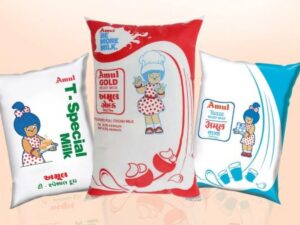Milk Wars:
India, the world’s largest milk producer, is in high stakes trade talks with the United States of America. But for India’s 80 million small dairy farmers, the issue is far more personal, that would have been. As the USA pushes for deeper access to India’s dairy market, the sector that nourishes 1.4 billion people and 16th rural India, finds itself on alert. Gujarat Cooperative Milk Marketing Foundation, which runs the eponymous Amul brand, has warned against opening the doors wide for American products.

JYEN MEHTA (MD. GUJRAT CO-OPRATIVE MILK MARKETING FEDRATION)
“The Indian trading sector is very sensitive and it is also vulnerable to trade negotiations which happen with different countries. The government is very sensitized of this and they would like to ensure that our milk producers who are largely poor in the rural areas of the country, their livelihood should not get affected by any of the trade negotiations.
We appreciate the effort of people, companies, teams, etc. to rescue their abandoned. It is also necessary that we work to keep the rescue characters who are lacking. If we are able to intentionally stop their survival in our country, we should be able to do so.”
India is far ahead of America in milk production and accounts for nearly 30% of the world’s production. While production in the USA has largely been stagnant over the past four years, the industry has grown 14% in India and was worth $16.8 billion last year. For millions of rural families, dairy is not just food security, it is their only steady source of income. And they’re concerned by reports that India may remove the tariff on U.S. milk products.
Donald Trump (U.S.A President)
Meanwhile, the American president may have paused additional tariff for 90 days, but a 10 percent base tariff still applies, and pressure remains on India to open its dairy market. India’s dairy industry has also raised cultural and dietary red flags. Cattle feed in the U.S. often includes animal by-products, which contradicts Indian vegetarian sensibility.
And pressure remains on India to open its dairy market. India’s dairy industry has also raised cultural and dietary red flags. Cattle feed in the U.S. often includes animal by-products, which contradicts Indian vegetarian sensibilities.
America and other leading milk producers have been putting pressure on India to provide greater access to its dairy market, which is being protected with higher import taxes and non-tariff barriers.
We appreciate the efforts. That’s because that brings new income for us into our country. It’s also necessary that we don’t keep them on cheap prices to our markets. We are intending to dump the surplus into our country, which we cannot do.
If I look at one side of the tariff, there is a loss. India has historically kept dairy out of trade deals, and with rising global pressure, it is likely to continue shielding the sector, seen as the soul of rural India. As India negotiates, the stakes are clear. Protect the farmer, protect the food, and preserve the faith of millions of people.
Amul NEWS in INDIA
Amul has hiked the price of milk by Rs. 2 per litre across all variants. Now, this hike is effective across the country except in Gujarat, where Gujarat is cooperative. Amul has announced a hike of Rs. 2 per litre on fresh milk, which is effective immediately, so it came into force this morning. The price hike is being done as per the company’s determining feed, and the overall cost of the production.

Now, Amul hiked last hike rather, the price in October by again Rs. 2 per litre. Jain Mehta, MD Amul Milk is now joining us here on the show. Many thanks, sir, for speaking with NDTV. First of all, why was this hike necessary? And, you know, because at the end of the day, this is a big hit for the common man.
JYEN MEHTA (MD. GUJRAT CO-OPRATIVE MILK MARKETING FEDRATION)
Yes, we do understand that there are concerns of all consumers. This milk price increase of Rs. 2 per litre across all areas outside the Gujarat market as we sell our products across the country was necessary because of the very steep increase in the improved cost of the production of milk. As you are aware, we last increased the price of our larger selling items like Dole milk, Tandem milk, Double Yolk Milk, and Kept Milk in the month of August last year.
And since the last four years, I mean from February 2019 to now, there have been only six increases of Rs. 52 each or so. So that means that these increases are not as steep as they are made out to be, but they are very necessary to ensure that our producers get a very negative price for the milk they produce. This means a lot of hardship on the side of the producers because of the steep increase in the cost of milk and the transportation cost and other things which has made this price increase inevitable.
We do understand the pressure on the consumers for this, but let me assure you that more than 80% of what the consumers pay for the price of normal milk and milk products goes to the producers. And so that means there is a direct bridge between the consumers and the producers and we ensure that the consumer, whatever they pay, is a benefit for the producers and that is how the country will grow on both these aspects.
